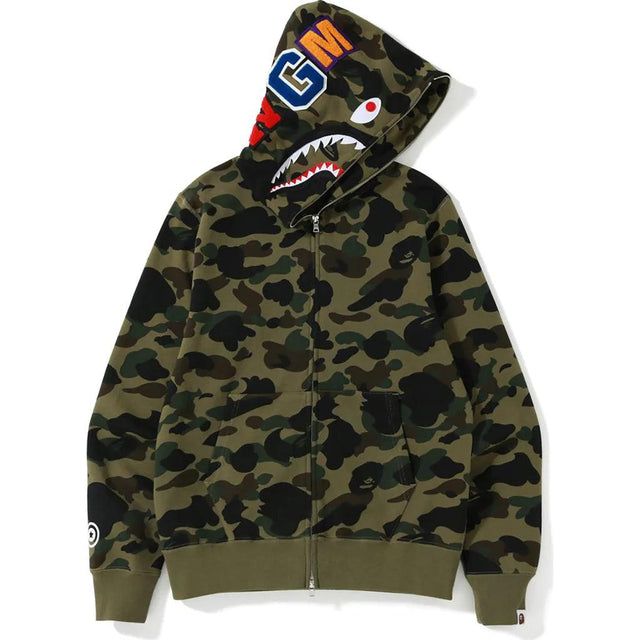The History of BAPE
A Bathing Ape, commonly known as BAPE, is a streetwear brand that has made an indelible mark on the global fashion scene. Founded by Nigo in 1993, BAPE has become synonymous with bold designs, innovative collaborations, and a unique cultural footprint. This blog explores the origins, evolution, and lasting impact of BAPE, offering a comprehensive look at why this brand remains a powerhouse in the world of streetwear.
The Origins of BAPEThe story of BAPE begins with its founder, Tomoaki Nagao, better known as Nigo. A passionate fashion enthusiast and DJ, Nigo was heavily influenced by American pop culture, hip-hop, and the burgeoning streetwear movement. In 1993, he opened a small boutique called Nowhere in the Harajuku district of Tokyo, which quickly became a hub for fashion-forward youth.
Nigo's vision for BAPE was clear: create a brand that stands out with unique, eye-catching designs. The name "A Bathing Ape" is a playful nod to the Japanese saying, "a bathing ape in lukewarm water," implying a sense of comfortable complacency. This irony became a defining characteristic of the brand's identity.
Iconic Designs and Symbols
One of BAPE's most recognizable elements is its iconic camouflage print, featuring a distinctive mix of colors and shapes. This camo pattern, along with the brand's ape head logo, has become a symbol of exclusivity and style. BAPE's designs often incorporate bold graphics, vibrant colors, and a playful aesthetic that appeals to a wide audience.
Another hallmark of BAPE's design philosophy is its limited-edition releases. By producing small quantities of each item, BAPE creates a sense of scarcity and high demand. This strategy has led to the brand's reputation for exclusivity and has driven its popularity among collectors and fashion enthusiasts.
The Power of Collaboration
BAPE's rise to prominence is also attributed to its strategic collaborations with other brands and artists. Over the years, BAPE has partnered with a diverse array of entities, from high-end fashion houses like Louis Vuitton to pop culture icons such as Marvel and Coca-Cola. These collaborations have allowed BAPE to reach new audiences and continuously reinvent its image.
One of the most notable collaborations was with Kanye West in 2007, resulting in the "Bapesta" sneaker featuring West's "College Dropout" bear logo. This collaboration not only cemented BAPE's status in the sneaker culture but also highlighted the brand's ability to merge fashion with music and art seamlessly.
BAPE's Global Influence
What started as a small boutique in Tokyo has grown into a global phenomenon. BAPE now boasts flagship stores in major cities around the world, including New York, London, Hong Kong, and Los Angeles. The brand's international expansion reflects its broad appeal and its ability to resonate with diverse cultural landscapes.
BAPE's influence extends beyond fashion; it has also left a significant mark on music and popular culture. Many hip-hop artists, including Pharrell Williams, Lil Wayne, and Jay-Z, have been spotted wearing BAPE, further solidifying its status as a cultural icon. The brand's presence in music videos, films, and other media continues to fuel its popularity and relevance.
Challenges and Evolution
Despite its success, BAPE has faced its share of challenges. The streetwear market is notoriously competitive, and maintaining relevance requires constant innovation. In 2011, Nigo sold BAPE to Hong Kong fashion conglomerate I.T Ltd., which marked a new chapter for the brand. While some feared that this change would dilute BAPE's unique identity, the brand has continued to thrive under new management.
Nigo's departure in 2013 raised questions about the future direction of BAPE. However, the brand has stayed true to its roots while adapting to contemporary trends. New collaborations, fresh designs, and strategic marketing have ensured that BAPE remains a leader in the streetwear scene.
Conclusion
A Bathing Ape, or BAPE, is more than just a streetwear brand; it is a cultural phenomenon that has reshaped the fashion landscape. From its humble beginnings in Harajuku to its global presence today, BAPE's journey is a testament to the power of creativity, innovation, and strategic branding. With its distinctive designs, influential collaborations, and enduring appeal, BAPE continues to captivate fashion enthusiasts and set trends worldwide.
As we look to the future, BAPE's legacy is assured. The brand's ability to evolve while staying true to its core values ensures that it will remain a cornerstone of streetwear culture for years to come. Whether you're a long-time fan or new to the world of BAPE, there's no denying the impact and influence of this iconic brand.
Today, BAPE is known as one of the most influential streetwear brands in the world and continues to be a leader in the industry. Its unique blend of Japanese and American influences and its commitment to quality and innovation have made it a favorite among fashion enthusiasts and collectors.



0 Comments
There are no comments yet. Be the first one to post one!